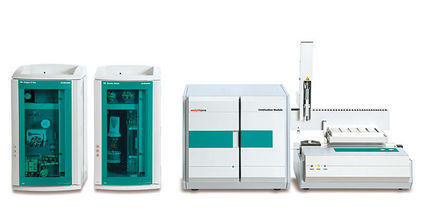To use all functions of this page, please activate cookies in your browser.
my.chemeurope.com
With an accout for my.chemeurope.com you can always see everything at a glance – and you can configure your own website and individual newsletter.
- My watch list
- My saved searches
- My saved topics
- My newsletter
Muscovite
Muscovite (also known as Common mica, Isinglass, or Potash mica[3]) is a phyllosilicate mineral of aluminium and potassium with formula: KAl2(AlSi3O10)(F,OH)2. It has a highly perfect basal cleavage yielding remarkably thin laminae (sheets), which are often highly elastic. Sheets of muscovite 5 metres by 3 metres have been found in Nellore, India.[4] Product highlightMuscovite melts at approximately 1320°C, has a Mohs hardness of 2 - 2.25 parallel to the [001] face, 4 perpendicular to the [001] and a specific gravity of 2.76 - 3. It can be colorless or tinted through grays, browns, greens, yellows, or (rarely) violet or red, and can be transparent or translucent. The green chromium rich variety is called fuchsite. Muscovite is the most common mica, found in granites, pegmatites, gneisses and schists, and as a contact metamorphic rock or as a secondary mineral resulting from the alteration of topaz, feldspar, kyanite, etc. In pegmatites, it is often found in immense sheets that are commercially valuable. Muscovite is in demand for the manufacture of fireproofing and insulating materials and to some extent as a lubricant. The name of muscovite comes from Muscovy-glass, a name formerly used for the mineral because of its use in Russia for windows. It is anisotropic, and has quite a high birefringence. Its crystal system is monoclinic. See alsoReferences
Categories: Potassium minerals | Aluminium minerals | Hydroxide minerals | Phyllosilicates |
||||||||||||||||||||||||||||||||||||||||||||||||||||||||
| This article is licensed under the GNU Free Documentation License. It uses material from the Wikipedia article "Muscovite". A list of authors is available in Wikipedia. | ||||||||||||||||||||||||||||||||||||||||||||||||||||||||







